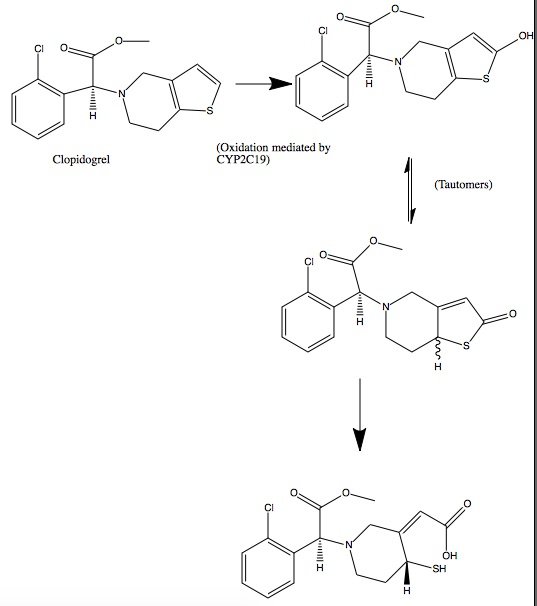Sandbox Reserved 430
From Proteopedia
(Difference between revisions)
| Line 10: | Line 10: | ||
==Introduction== | ==Introduction== | ||
| - | The goal of pharmaceuticals is to prevent or cure disease through drug therapy by specifically targeting cells, proteins, enzymes, genes, etc. It is often crucial to understand the structure, function, and relevant mechanisms involved with the target when designing an effective drug candidate. Furthermore, being able to know the effects on structure after drug-binding can provide insight into the functionality of a specific target. | + | The goal of pharmaceuticals is to prevent or cure disease through drug therapy by specifically targeting cells, proteins, enzymes, genes, etc. It is often crucial to understand the structure, function, and relevant mechanisms involved with the target when designing an effective drug candidate. Furthermore, being able to know the effects on structure after drug-binding can provide insight into the functionality of a specific target. Because of this fact, it is common practice for research labs to develop protein crystals and use methods like x-ray diffraction, electron density mapping, and nuclear magnetic resonance spectroscopy to model the full structure. In this case, P2Y12, a member of P2Y receptor, was modeled when binded to ADZ1283, an engineered receptor inhibitor.The molecular scene shows the chemical<scene name='48/483887/Here_is/1'> model</scene> of P2Y12 with the anionic side chains in red and charged nucleic acids and ligands in grey for contrast. |
| - | P2Y12 is a G-protein-coupled receptor (GPCR) found on blood platelets. As a GPCR, P2Y12 responds to concentrations of adenosine diphosphate in the extracellular matrix. This leads to purinergic signal transduction and ultimately cellular response. Being located on blood platelets, activated P2Y12 receptors induce platelet activation and clotting. Drugs, such as clopidogrel, ticagrelor, and ticlopidine, are designed to inhibit P2Y12 activation by altering the receptor active site through secondary and tertiary structure modification. Successful inhibition of P2Y12 corresponds to decreased platelet activation, a helpful tool in prevention of stroke and heart attacks. Additionally, P2Y12-specific drugs can be used in treating cardiovascular disease. | ||
| - | + | Image analysis of P2Y12 crystals is used to model protein structure in complex with AstraZeneca’s novel ADZ1283: Ethyl 6-(4(-((benzylsulphonyl)carbamoyl)piperidin-1yl)-5-cyano-2-methylnicotinate. ADZ1283 functions to block the P2Y12 receptor as a means to treat thrombosis. ADZ1283-binding leads to unique protein structure, unfound in other P2Y receptors. Helix V of seven transmembrane helices is found to be <scene name='48/483887/Helix_vii/1'>elongated and straightened</scene>. This change along with the discovery of a potential second active within P2Y12 has implications on how P2Y12 uses it’s seven transmembrane helical bundle interact with ADP in the bloodstream. | |
| - | + | ||
| - | + | ||
| + | Due to the nature of P2Y12 as a G-coupled protein receptor ( STILL EDITING--- going for dinner - ADAM) | ||
==Overall Structure== | ==Overall Structure== | ||
The <scene name='48/483887/Secondary_structure/2'>secondary structure</scene> is made up of eight alpha helices. There are seven transmembrane alpha helices and a carboxy-terminal helix VII, which is parallel to the membrane bilayer. | The <scene name='48/483887/Secondary_structure/2'>secondary structure</scene> is made up of eight alpha helices. There are seven transmembrane alpha helices and a carboxy-terminal helix VII, which is parallel to the membrane bilayer. | ||
Revision as of 20:58, 10 April 2016
| This Sandbox is Reserved from January 19, 2016, through August 31, 2016 for use for Proteopedia Team Projects by the class Chemistry 423 Biochemistry for Chemists taught by Lynmarie K Thompson at University of Massachusetts Amherst, USA. This reservation includes Sandbox Reserved 425 through Sandbox Reserved 439. |
P2Y12 Receptor in Complex with AZD1283 (4ntj)[1]
by [Cora Ricker, Lauren Timmins, Aidan Finnerty, Adam Murphy, Duy Nguyen]
Student Projects for UMass Chemistry 423 Spring 2016
| |||||||||||

